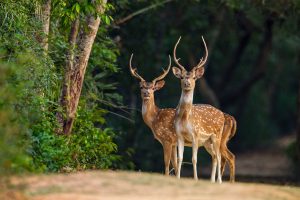
What is a mammal? Biologists and naturalists, for the sake of studying and easier identification, have for a long time been classifying living organisms into universally accepted taxonomic groups based on anatomical similarities and differences. Mammals are those vertebrate animals that have been categorised under class ‘Mammalia’ owing to some very unique physical characteristics such as presence of mammary glands in females that produce milk, hair on the body, giving birth to live young (viviparous), design of the jaw and the ear, lack of nuclei in the red blood cells etc. Although, there are fascinating exceptions to every single one of those mammalian traits. Think egg-laying mammals – duck-billed platypus and echidna, or the scaly pangolins and armadillos. Taxonomy afterall, is not an exact science.
We, humans, too belong to this fascinating animal group.
The sheer range of types of mammals that exist on the planet is baffling. They have evolved into almost all types of lifestyles such as terrestrial, aquatic, fossorial, and arboreal. Modes of locomotion too among them is incredibly varied – they walk, run, fly, glide, swim, brachiate (swing from tree limb to tree limb using arms and unique to primates), climb, and burrow. From the largest mammal on Earth, the Blue Whale (Balaenoptera musculus) that can weigh up to 200 tonnes and grow up to 80-100 feet in length, to Etruscan shrew (Suncus etruscus) which weighs all of 1.5 g, the mammalian group is rather broad. From the meat-eating carnivores, to hoofed herbivores to aquatic cetaceans to bats and primates, and many more, the Mammalian class is further divided into 19 taxonomic groups called Orders, one among which is the order Primates to which our species the Homo sapiens belongs. There are over 5,000 species of mammals in the world known to science. The mammalian diversity also reflects from the fact that mammals are found living in every major known habitat.
India boasts of a rich mammalian diversity, with some of its most famous wild denizens such as the tiger, elephant and rhino being mammals. But, of the 410 odd mammalian species in the country, 89 are listed by the International Union of Conservation of Nature (IUCN) as threatened. This list of endangered mammals includes, India’s national animal, the Bengal tiger (Panthera tigris tigris), national heritage animal, the Asiatic elephant (Elephas maximus), as well as the national aquatic animal, the freshwater dolphin, Gangetic river dolphin (Platanista gangetica gangetica). Due to biodiversity and habitat loss, poaching for the illegal wildlife trade and meat, and human-wildlife conflict, most mammals in India are seeing a rapid decline in their populations in the wild, some more than others. Today, nearly 12 percent of the mammal species in India face extinction, while several more are endangered and vulnerable.
